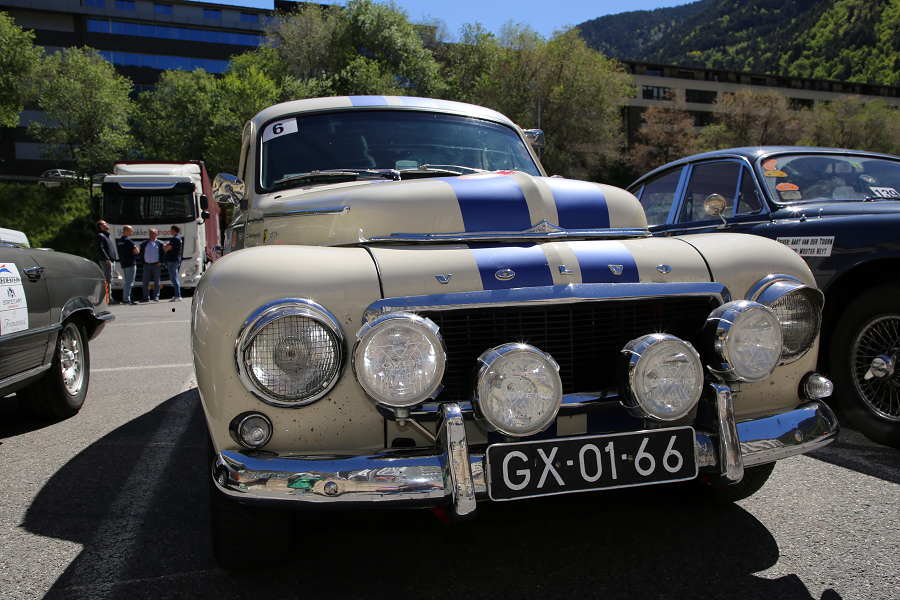Volvo 544: white coupe
In 1958, the PV544 was phased in. Subtle differences with the PV444 included the introduction of a curved one-piece windshield to replace the two panes of flat glass, larger taillights, and a ribbon-type speedometer. The 444’s three-speed manual transmission was also supplanted by a four-speed unit in the 544. The interior was modified to accommodate five people instead of four by increasing the width of the back seat and using thinner backrests on the front seats.
The next significant change occurred in 1962, when the B16 was replaced by Volvo’s new B18 engine, initially developed for the P1800 sports car introduced the previous year.
This 1.8 L engine had five main bearings. Again single and twin carburettor versions were offered, designated B18A and B18D, respectively. The US market saw very few B18A cars since the United States’ public prioritised performance over fuel economy. Also in 1962, Volvo changed from 6- to 12-volt electrical systems. In 1963 Volvo began producing the 544 at their new Canadian Dartmouth/Halifax plant, the first Volvo plant to be located outside of Sweden.
The PV544 was also made as an estate (wagon), the Duett, initially designated the P445 and later the P210.
The 544 received incremental mechanical revisions and trim changes until its final production year of 1965. Exactly 440,000 units were built during the 18-year run. The car had so endeared itself to its owners that Volvo ran self-deprecating advertisements in late 1965 and early 1966 imploring PV owners not to be angry with the company.
The Duett’s utility allowed Volvo to continue the wagon’s production through the 1969 model year. These were then replaced in some markets by a high-roof version of the Volvo 145, called the Express.
The Volvo PV is a series of two-door, four-passenger car models — the PV444 and the PV544 — made by Volvo from 1947 to 1965. During World War II’s early stages, Volvo decided that a new, smaller car that could deliver good fuel economy would assure the company’s future.
A raw materials shortage during the war drove home the point that an automobile should be smaller, and also complicated Volvo’s ability to mass-produce the product. In 1944, when the car was finally introduced to a car-hungry public, response was very positive and orders poured in from the Swedish population. It was another three years though, until 1947, before series production began.













